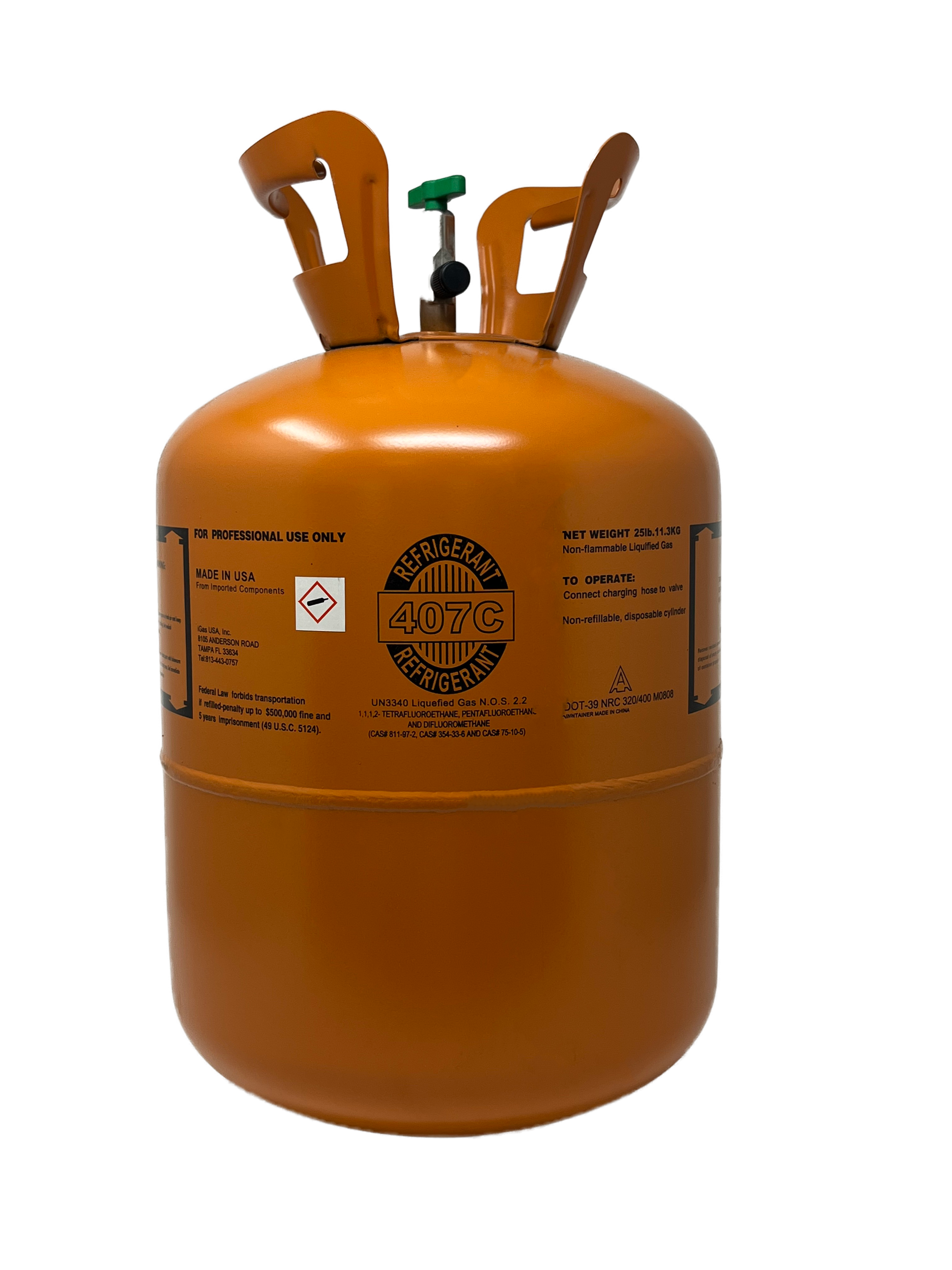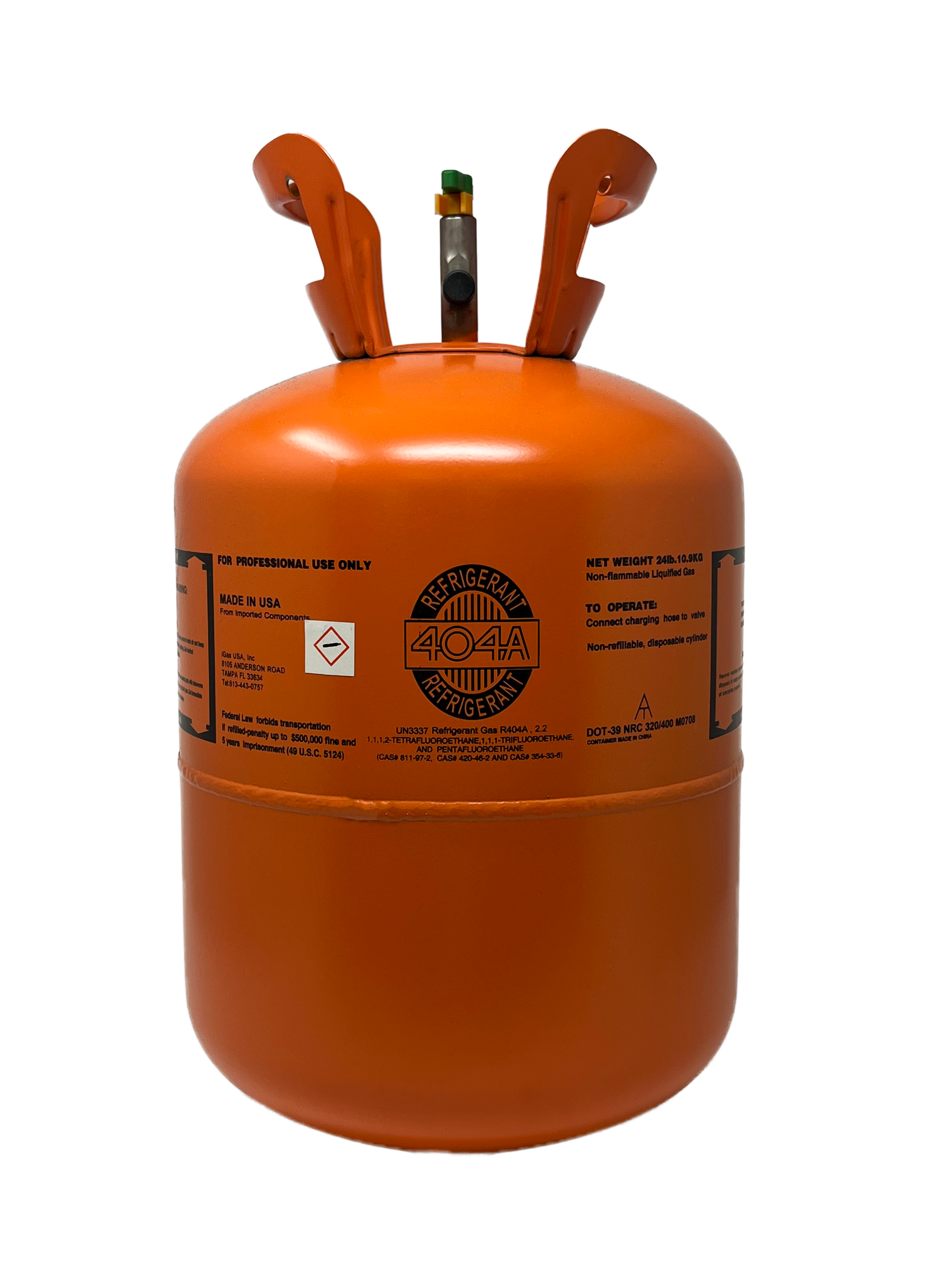
R-407C Refrigerant
R-407C is a mixture of HFC designed to replace R-22 in air conditioning applications. Many manufactures have designed equipment to be compatible with this refrigerant. R-407C can also be used to replace R-502 for some existing medium-temperature applications.
Delivery: Continental United States and Mexico
R-407C is a mixture of HFC designed to replace R-22 in air conditioning applications. Many manufactures have designed equipment to be compatible with this refrigerant. R-407C can also be used to replace R-502 for some existing medium-temperature applications.
It is non toxic and non flammable meeting the highest A1 Classification.
| Chemical Formula | Blend |
| Refrigerant Type | HFC |
| Refrigeration Oils | Polyolester (POE) |
| Net Weight | 25 lbs. / 115 lbs. / 925 lbs. / 1,550 lbs |
| Molecular Weight | 86.2 |
| Boiling Point | (1 atm, °F): -43.6 |
| Critical Pressure | (psia): 672.1 |
| Critical Temperature | (°F): 187 |
| Critical Density | (lb./ft³): 32 |
A refrigerant is a substance or mixture, usually a fluid, used in a heat pump and refrigeration cycle. In most cycles it undergoes phase transitions from a liquid to a gas and back again. Many working fluids have been used for such purposes.
The color guideline is not a substitute for reading cylinder labels and markings.
Refrigerant is a tasteless, mostly odorless gas. When it is deeply inhaled, it can cut off vital oxygen to your cells and lungs. Limited exposure — for example, a spill on your skin or breathing near an open container — is only mildly harmful. However, you should try to avoid all contact with these types of chemicals.
To remove chlorine from the refrigerant, manufacturers created another set of refrigerants called HFCs (or Hydro Fluro Carbons). Although they also have the potential for global warming, but still they are better than HCFCs as they do not deplete the ozone layer. The most common HFC used in air conditioners is R-410A.
R-134a Refrigerant.
Widely used in many air conditioning and refrigeration systems globally.
It is a hydro-fluorocarbon (HFC) that does not contribute to ozone depletion; also the first non-ozone-depleting fluorocarbon refrigerant to be commercialized.
To remove chlorine from the refrigerant, manufacturers created another set of refrigerants called HFCs (or Hydro Fluro Carbons). Although they also have the potential for global warming, but still, they are better than HCFCs as they do not deplete the ozone layer. The most common HFC used in air conditioners is R-410A.


